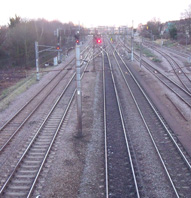Sexual exploitation, ‘county lines’ drug running and other forms of child criminal exploitation affect all areas – urban, rural, affluent as well as deprived. Child victims come from a range of backgrounds. And while the most vulnerable are obvious targets for gangs, there are examples of private school children being groomed too. So says a thematic report, from inspectorates Ofsted, HMI Constabulary and Fire & Rescue Services (HMICFRS), the Care Quality Commission (CQC) and HMI Probation.
Inspectors found that some partners do not have a grip on the scale of criminal exploitation in their area. Poor intelligence-sharing sometimes hampers wider recognition and understanding of criminal exploitation, and, in turn, the ability to effectively respond to children; who should be seen as victims, not perpetrators. Children are often being groomed or tricked into working before they recognise the dangers, and often before parents or professionals realise what is happening. The report calls for a whole system approach, and asks all agencies to get the basics right.
Wendy Williams, Her Majesty’s Inspector of Constabulary, said: “Criminally exploited children can only get the help they need when they’ve been recognised as a victim. We’ve found that when frontline officers handle cases involving children suspected of a criminal offence, they can be too quick to accept what they see at face value. Instead of seeing a vulnerable child in desperate need, they can see a criminal in the making. When officers ask the right questions – is this child being exploited? Are they at risk? – they can take the right steps to keep children safe and bring the real perpetrators to justice.”
Prof Ursula Gallagher, Deputy Chief Inspector at the Care Quality Commission (CQC) and lead for children’s health and safeguarding, said: “Healthcare professionals and anyone working with children have a responsibility to look for the signs of exploitation, to use their curiosity and compassion, and not judge a child for their behaviour or the situation they are in. This is why we work with other regulators to test how well individual parts of a system are working together to protect children and young people and to make clear what we expect of a high-performing area.
“But it doesn’t stop there. Services and systems as a whole need to consider how they share what they know with people working beyond their own locality, because people exploiting children do not limit their activity by geographical boundaries, and important safeguarding information must be able to follow children in order to protect them.”
Police forces inspected admitted that it was still possible that children could be prosecuted, despite clear evidence that they were being exploited.
Some background
The report is about the findings from three joint targeted area inspections, carried out in the spring of 2018, which examined ‘the multi-agency response to older child exploitation and children missing from home, care or education’. It is an addendum to the HMIC 2016 report: ‘‘Time to listen’ – a joined up response to child sexual exploitation and missing children’. The areas inspected were Greenwich, Southend-on-Sea and Dorset.










